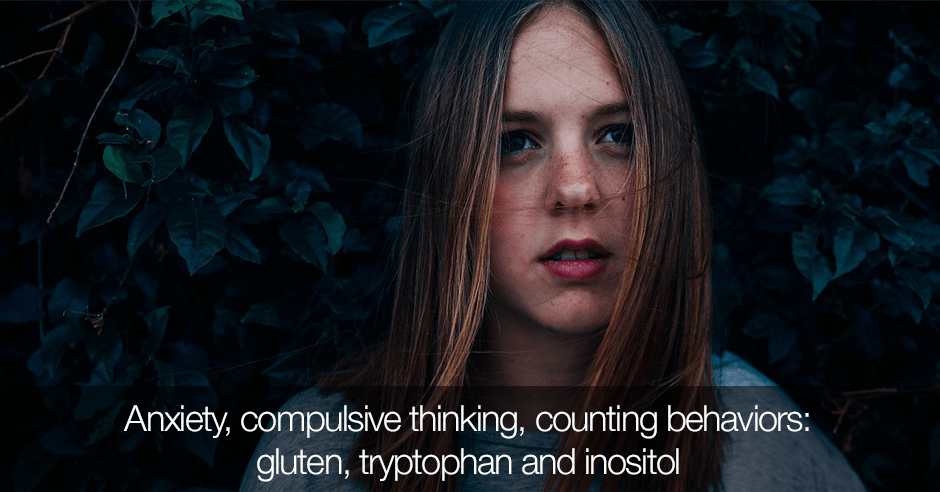
Today I’m going to share my feedback on a question I received on how to approach working with a child with anxiety, compulsive thinking and counting behaviors in the hope it can help you or someone you know (or are working with if you’re a practitioner). Here is the question:
Regarding anxiety and compulsive thinking/OCD counting behaviors in a 12 year old, have you experienced (or heard through client sharing) a correlation with certain foods or inflammatory compounds? In a younger person, I am trying figure out the triggers if there is low production of certain neurotransmitters driving the symptoms. This child in particular has had a long history of allergies and terrible asthma (requiring nebulizer treatments) so I’ve long suspected food sensitivities as a driver for systemic inflammation but am trying to connect the dots for her parent. The counting seems to be a distraction of sorts for her – I assume following a triggering thought. This parent is very new to integrative therapies so treating with an amino acid is going to *feel* like she’s not doing enough as parent. Standard talk therapy has not helped.
This is how I responded and it’s how I would start to work with a parent with a child with these types of issues.
After looking at the basics to make sure the child is eating real whole food with no additives, is not consuming any caffeine and is getting quality animal protein at breakfast (to keep blood sugar stable and reduce anxiety), I always consider gluten and even dairy and other food intolerances. I write about the success of a gluten-free diet with a 7 year old boy in this blog: Integrative Medicine Approach to Pediatric Obsessive-Compulsive Disorder and Anxiety. He saw a “marked reduction of OCD symptoms and anxiety along with marked improvement of social behavior and school work.”
OCD and counting behaviors are classic low serotonin symptoms and her anxiety could be the low-serotonin worrying type or the low GABA type which is more physical anxiety. I’d have them do the amino acid questionnaire
I’d start with a trial of tryptophan – using 100mg of Lidtke Chewable Tryptophan – to help with the OCD, counting and worry-type anxiety. If it helps, I’d have her use it twice a day mid-afternoon and evening, increasing it over the course of a few weeks to find the ideal amount for symptom relief (and keeping a food mood log to record doses and symptoms).
Some people do really well with tryptophan, others do better with 5-HTP for low serotonin symptoms, so doing a trial with 25mg of 5-HTP would be an option if the tryptophan doesn’t help as expected.
I would carefully review the precautions with the mom as tryptophan and 5-HTP can sometimes be an issue with asthma and may need to be lowered or discontinued.
Inositol can be added if additional nutritional support is needed for the OCD and counting behaviors and may even be needed to replace the tryptophan or 5-HTP if either one triggers asthma. The maximum dose in the research is 18g of inositol per day and I start at 2g once a day and increase slowly over a few weeks to find the ideal dose. Here is feedback from one mom on how inositol alone helped her son with migraines, stress, anxiety and OCD
Once we’ve figured out nutritional support for the low serotonin symptoms then we’d address low GABA if needed, using sublingual GABA. [Update Nov 17, 2017: I mentioned GABA as a possibility but with her symptoms and the new GABA research on intrusive thoughts, a GABA trial would definitely be something to pursue]
I found this comment to be rather unusual: “treating with an amino acid is going to *feel* like she’s not doing enough as parent.” The parents I work with are thrilled to discover how powerful the amino acids are and how quickly they provide amazing results.
These other factors would also be addressed: possible high cortisol, gut health and any of the other possible contributing root causes. I also always keep Lyme disease, heavy metals and PANDAS on the list as possible areas to refer out for if symptoms are not resolving with the above approaches.
Here are links to the amino acid questionnaire, the precautions and the supplements:
- I have my clients complete the Amino Acids Mood Questionnaire from The Antianxiety Food Solution and check off their symptoms in each of the sections. The rating uses scale of 1-10 with 10 being worst.
- I also have my clients review the Amino Acids Precautions and we figure out which amino acids they can and can’t use
- These are some of the supplements I use with my clients
Have you used any of the above approaches with your child or for your symptoms or for a client/patient?